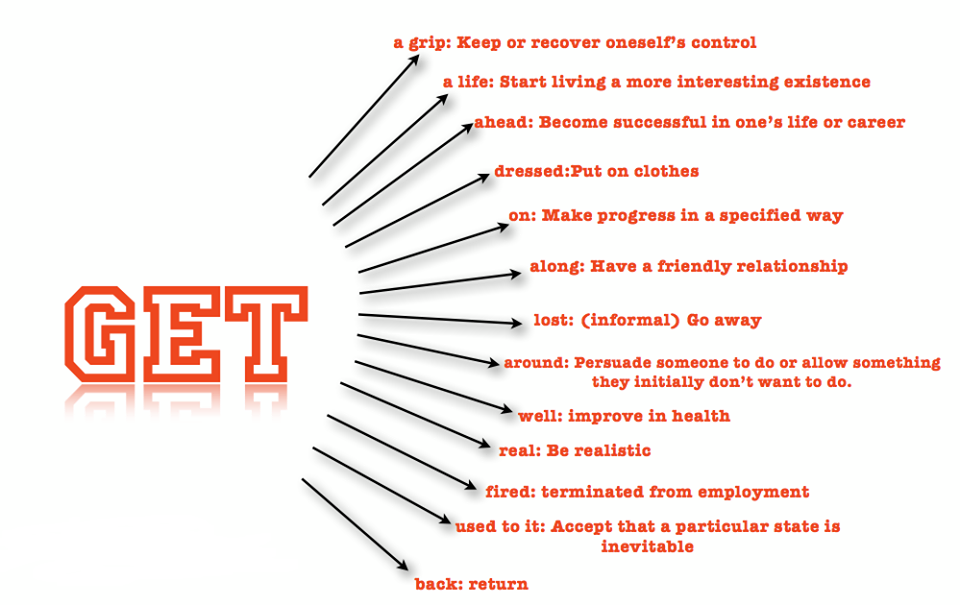How To Get Rid Of Cement
How To Get Rid Of Cement: The Ultimate DIY Guide
Oh no, cement splatter! Whether you just finished a big DIY project or inherited a messy job site, finding hardened cement where it shouldn't be can feel like a major headache. Don't worry, you're in the right place. We're going to walk through exactly How To Get Rid Of Cement safely and effectively, no matter the surface.
Dealing with stubborn, dried cement requires a blend of chemistry and brute force. But before you grab the nearest sledgehammer, understanding the proper techniques will save you time, effort, and prevent damage to the underlying surface. Let's get that cement gone!
Safety First: Preparing for Cement Removal
Before attempting any abrasive or chemical methods, safety must be your top priority. Cement dust and the acids used to dissolve it can be hazardous. Taking a few moments to prepare properly ensures you protect your skin, eyes, and lungs.
Essential Personal Protective Equipment (PPE)
Cement removal can be messy and dusty, especially when using mechanical methods. If you are using strong chemicals, splash protection is vital. Never skip these items!
- Safety Glasses or Goggles: Essential for protecting your eyes from flying debris and chemical splashes.
- Heavy-Duty Gloves: Cement is alkaline and can cause skin irritation; acids can cause severe burns.
- N95 Dust Mask or Respirator: Necessary when grinding or chipping to prevent inhaling silica dust.
- Long Sleeves and Pants: Protect your skin from direct contact with chemicals and cement debris.
Assessing the Type and Age of the Cement Stain
The method you choose heavily depends on how long the cement has been sitting and what surface it's stuck to. Fresh cement is much easier to remove than fully cured concrete.
If the cement has been curing for weeks or months, it will require stronger acids or more powerful mechanical tools. Always test your removal method on a small, inconspicuous area first, especially when working on surfaces like brick or natural stone.
Chemical Warfare: Using Solvents and Acids
Sometimes, chemical dissolution is the most efficient way to break down the bond between the cement and the surface. These solutions react with the lime in the cement, softening it enough for scraping.
Mild Solutions: Vinegar and Commercial Removers
For thin films or light splatter, you might not need heavy-duty chemicals. White vinegar is a gentle acid that works wonders on recently dried cement.
Soak a rag thoroughly in plain white vinegar and place it over the cement spot. Let it sit for 30 minutes to an hour, keeping the area wet. The acid will slowly break down the cement's structure. After soaking, you should be able to scrape the residue off with a putty knife or stiff brush.
If vinegar doesn't cut it, look for specialized commercial cement dissolvers. Many of these products use buffered organic acids that are safer than traditional harsh chemicals but still effectively tell the cement who's boss.
Stronger Approach: Muriatic Acid (Handle with Extreme Care)
When dealing with thick, cured cement deposits on robust surfaces like bare concrete or tools, muriatic acid (hydrochloric acid) may be necessary. This is the heavy artillery in the battle for How To Get Rid Of Cement, and it demands respect.
Always dilute the acid by adding it slowly to water—NEVER add water to the acid. Work in a well-ventilated area, wear full PPE, and have baking soda or lime nearby to neutralize spills. Apply the solution, let it bubble and work for a few minutes, then rinse thoroughly with water immediately.
Mechanical Methods: When Elbow Grease is Required
Sometimes the cement is just too thick or the surface is too sensitive for chemicals. In these cases, physical removal is the best option. Get ready to put in some serious work!
Chipping and Scraping Techniques
For manageable patches, manual tools can do the trick. A chisel, hammer, or a heavy-duty scraper blade works well. The key is to hit the cement obliquely, aiming to fracture the bond between the cement and the substrate, rather than hitting the surface directly.
You can pre-soften the cement by soaking it overnight with wet rags. Keeping the cement wet makes it slightly softer and less prone to shattering into sharp fragments.
Using Power Tools Safely (Grinders and Jackhammers)
If you're facing large, deeply bonded pieces of cement, you may need to call in power tool backup. Angle grinders with diamond blades or masonry bits are excellent for precise removal. For massive demolition, a rotary hammer with a chisel attachment is your friend.
Always exercise extreme caution with these tools. Maintain a steady grip and use the appropriate guards. Remember, power tools create significant dust, so high-quality respiratory protection is non-negotiable here.
Pressure Washing for Light Residue
For fine cement dust or very thin layers of splatter, a strong pressure washer (2500 PSI or higher) might be enough. The high-pressure water can scour away the residue without damaging the surface below.
Start with a wide spray pattern and gradually narrow it down if necessary. Be mindful of where the water is going, as it can spread the cement slurry to clean areas. This method is often a great finishing step after initial chipping or chemical treatment.
Dealing with Specific Surfaces
The surface underneath the cement dictates the aggressiveness of your removal strategy. You wouldn't treat a wooden deck the same way you'd treat a brick patio.
Removing Cement from Pavement and Concrete
Concrete is durable, which gives you the most freedom. You can typically use commercial acid removers or even diluted muriatic acid on cured concrete, followed by aggressive scraping or grinding. Just be aware that strong acids can slightly etch the surface, changing its texture.
For thick blobs, chip away the bulk mechanically first, then use chemicals to dissolve the remaining layer. This two-step process minimizes chemical waste and improves efficiency.
Getting Cement Off Wood or Delicate Materials
Wood, painted surfaces, glass, or plastic require the utmost care. Avoid abrasive techniques that will scratch or gouge the material.
- Soak: Keep the area soaked with wet rags or vinegar for several hours to soften the cement.
- Pry Gently: Use a plastic scraper or a wooden dowel to gently pry the cement off the delicate surface.
- Sand (Wood Only): For small remaining residues on raw wood, light sanding may be necessary after removal.
- Specialized Removers: Use pH-neutral or specialized, non-etching commercial removers designed for delicate surfaces.
The goal here is slow dissolution rather than fast abrasion. Patience is key when attempting to figure out How To Get Rid Of Cement from fragile items.
Conclusion: Mastering Cement Removal
You now have a solid toolkit for tackling that dreaded cement mess. Whether you opt for the mechanical approach of scraping and grinding or the chemical attack using vinegar or stronger acids, remember that preparation and safety are paramount. Knowing How To Get Rid Of Cement efficiently saves you money and preserves the integrity of your property.
Start with the least aggressive method, escalate your efforts only when necessary, and always prioritize wearing the correct PPE. With a little determination, that hardened cement stain will soon be a distant memory!
Frequently Asked Questions (FAQ)
- What is the best household item to remove cement?
- White vinegar (acetic acid) is the best and safest household item for removing thin layers or splashes of cement. It must be left to soak for a significant time to work effectively.
- Can I pressure wash fully cured cement?
- Pressure washing alone usually isn't enough to remove thick, fully cured cement. However, it is an excellent finishing step after you have chemically treated or mechanically chipped the bulk of the cement off.
- Is it safe to use muriatic acid for concrete removal?
- Muriatic acid is highly effective but extremely dangerous. It should only be used by experienced DIYers or professionals in well-ventilated areas, wearing full chemical-resistant PPE, and only after exhausting safer alternatives. Always dilute the acid properly before use.
- How long does it take for cement to fully cure?
- Cement reaches its initial hardness within 24–48 hours, but it takes about 7 days to reach 70% of its strength and 28 days to be considered fully cured. The longer it cures, the harder it is to remove.
How To Get Rid Of Cement
How To Get Rid Of Cement Wallpapers
Collection of how to get rid of cement wallpapers for your desktop and mobile devices.

Stunning How To Get Rid Of Cement Background in 4K
This gorgeous how to get rid of cement photo offers a breathtaking view, making it a perfect choice for your next wallpaper.

Stunning How To Get Rid Of Cement Picture in 4K
This gorgeous how to get rid of cement photo offers a breathtaking view, making it a perfect choice for your next wallpaper.

High-Quality How To Get Rid Of Cement Wallpaper Photography
Explore this high-quality how to get rid of cement image, perfect for enhancing your desktop or mobile wallpaper.

Beautiful How To Get Rid Of Cement Abstract for Your Screen
Explore this high-quality how to get rid of cement image, perfect for enhancing your desktop or mobile wallpaper.

Amazing How To Get Rid Of Cement Abstract in 4K
Transform your screen with this vivid how to get rid of cement artwork, a true masterpiece of digital design.

Vibrant How To Get Rid Of Cement Artwork Illustration
Transform your screen with this vivid how to get rid of cement artwork, a true masterpiece of digital design.

Amazing How To Get Rid Of Cement Design Digital Art
Explore this high-quality how to get rid of cement image, perfect for enhancing your desktop or mobile wallpaper.

Amazing How To Get Rid Of Cement Photo in 4K
Explore this high-quality how to get rid of cement image, perfect for enhancing your desktop or mobile wallpaper.

Spectacular How To Get Rid Of Cement Design Art
A captivating how to get rid of cement scene that brings tranquility and beauty to any device.

Lush How To Get Rid Of Cement Picture Digital Art
A captivating how to get rid of cement scene that brings tranquility and beauty to any device.

High-Quality How To Get Rid Of Cement Scene Digital Art
Experience the crisp clarity of this stunning how to get rid of cement image, available in high resolution for all your screens.
Dynamic How To Get Rid Of Cement Picture Concept
Find inspiration with this unique how to get rid of cement illustration, crafted to provide a fresh look for your background.

Gorgeous How To Get Rid Of Cement Capture Concept
Immerse yourself in the stunning details of this beautiful how to get rid of cement wallpaper, designed for a captivating visual experience.

Stunning How To Get Rid Of Cement Capture for Your Screen
Find inspiration with this unique how to get rid of cement illustration, crafted to provide a fresh look for your background.

Stunning How To Get Rid Of Cement Background in HD
Find inspiration with this unique how to get rid of cement illustration, crafted to provide a fresh look for your background.

Vivid How To Get Rid Of Cement Artwork Collection
Discover an amazing how to get rid of cement background image, ideal for personalizing your devices with vibrant colors and intricate designs.

Spectacular How To Get Rid Of Cement Background Collection
This gorgeous how to get rid of cement photo offers a breathtaking view, making it a perfect choice for your next wallpaper.

Lush How To Get Rid Of Cement Abstract Digital Art
Immerse yourself in the stunning details of this beautiful how to get rid of cement wallpaper, designed for a captivating visual experience.


0 Response to "How To Get Rid Of Cement"
Post a Comment